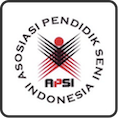Proses Kreatif Penciptaan Karya Tari Kontemporer Meniti Jejak Tubuh
Abstract
Penelitian mengenai proses kreatif dalam tari kontemporer masih sangat jarang dituliskan di dalam karya – karya penelitian. Hal ini berdampak pada kesenjangan antara produksi praktik seni dengan produksi pengetahuan dari praktik seni itu sendiri. Oleh Karena itu, adalah sangat penting untuk menuliskan proses kreatif penciptaan karya seni sehingga dapat bermanfaat bagi produksi pengetahuan khususnya di bidang tari dan bagi peneliti dan koreografer lainnya. Penelitian ini berfokus pada karya tari Meniti Jejak Tubuh yang merupakan sebuah karya tari kontemporer dimana saya sebagai pencipta/koreografer melakukan riset terhadap perjalanan tubuh saya sendiri yang lahir dan tumbuh di Kerinci lalu melakukan proses kreatif di tengah budaya Minangkabau. Saya melakukan eksperimentasi yang kemudian mengeksplorasi persilangan budaya (cross – culture), persilangan gender (cross – gender), sejarah tubuh, tubuh tradisi, habitus dan Hybridity. Kemudian menjadi sebuah karya tari tunggal yang melibatkan ulang - alik tradisi dan kontemporer, masa lalu dan hari ini serta, Kerinci dan Minang. Penelitian ini menggunakan pendekatan autoetnografi, yaitu suatu metode penelitian yang menggunakan data autobiografi dari peneliti untuk menganalisis dan menginterpretasi asusmsi budaya mereka dalam hal ini proses kreatif yang peneliti lakukan sendiri.
Kata Kunci: Meniti Jejak Tubuh; Autoetnografi; Proses
Abstract
Research on the creative process in contemporary dance is rarely written about in research works. This has an impact on the gap between the production of art practice and the production of knowledge from the practice of art itself. Therefore, it is very important to write down the creative process of creating works of art so that it can be useful for the production of knowledge, especially in the field of dance and for other researchers and choreographers. This research focuses on the Meniti Jejak Badan dance work, which is a contemporary dance work in which I, as a creator/choreographer, conduct research on the journey of my own body, which was born and grew up in Kerinci and then carried out a creative process in the midst of Minangkabau culture. I did an experiment which then explored cross-culture, cross-gender, body history, body tradition, habitus and hybridity. Then it becomes a single dance work involving a shuttle between tradition and contemporary, past and present as well as, Kerinci and Minang. This study uses an autoethnographic approach, which is a research method that uses autobiographical data from researchers to analyze and interpret their cultural assumptions, in this case the creative process that the researcher does himself.
Keywords: Tracing Body Tracks; Autoethnography; Creative Process.
Keywords
Full Text:
PDFReferences
Bourdieu, Pierre. The logic of Practice, translate by Richard Nice. Stanford: Stanford University Press, 1990.
Chang, H. 2008. Autoethnograpy as Method. California: Left Coast Press, Inc.
Donie Fajar Kurniawan. 2019. Autoetnografi suatu alternatif riset ilmiah bidang seni. Laporan Penelitian Pustaka. DIPA ISI Surakarta.
Ellis, Carroline. 2004. The ethnographic I: A methodological novel about autoethnography.Walnut Creek: AltaMira Press.
Wilcox, E. E. (2005). Dance as L‟intervention: Health and Aesthetics of Experience in French Contemporary Dance. Body & Society, 11(4), 109–139. https://doi.org/10.1177/1357034X05 058023
Sherli Novalinda dkk. 2022. Tino Mariam dan Pelestarian Tale Kerinci. Deepublish Publisher.
Sherli Novalinda. 2013. Merefleksikan Sejarah Buruh Petik Teh melalui Koreografi Sang Pemetik.
Eko Supriyanto. 2018. Ikat kait Impulsif Sarira, Gagasan yang Mewujud Era 1990-2010. Penerbit Garudawaca.
Lubart, T. I. (2001). Models of the creative process: past, present and future. Creat. Res. J. 13, 295–308.
Hazel Smith, and Roger T. Dean (2009), Practice-led Research, Research-led Practice in the Creative Arts. Edinburg University Press. P,5.
Min Zhu, “The reinvention of tradition—in contemporary Chinese classical dance creations (1980–2010)”. Refereed Proceding of the 2014 World Dance Alliance Global Summit. 18 December 2015.
Roza Muliati. 2020. Membaca Ulang Tubuh Tradisi dalam Tari Meniti Jejak Tubuh karya Sherli Novalinda dan Tanangan karya Kurniadi Ilham. Laporan Akhir Penelitian Berbasis Pusat Kajian LPPMPP ISI padangpanjang.
Wall, Sarah. An Autoethnography on Learning About Autoethnography. International Journal of Qualitative Methods 2006, 5(2). 2006.
DOI: http://dx.doi.org/10.26887/mapj.v6i1.3704
DOI (PDF): http://dx.doi.org/10.26887/mapj.v6i1.3704.g1329
MAPJ Indexed By:
Melayu Arts and Performance Journal 
E-ISSN: 2656-3509| P-ISSN:2656-0232 | DOI: 10.26887/mapj Website: http://journal.isi-padangpanjang.ac.id/index.php/MAPJ/index
Email: jurnalmapj@gmail.com | redaksimapj@isi-padangpanjang.ac.id
Editor in Chief: Dr. Dede Pramayoza | Managing Editor: Saaduddin, M.Sn
Publisher: Program Pasca Sarjana ISI Padangpanjang
Jalan Bahder Johan Padangpanjang 27128
Phone: (0752) 82077, Fax: (0752) 82803

Melayu Arts and Performance Journal (MAPJ) is licensed under a Creative Commons Attribution-NonCommercial 4.0 International License

















